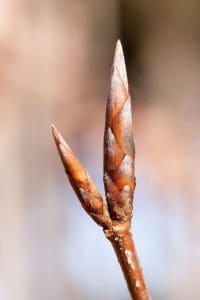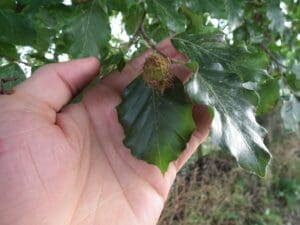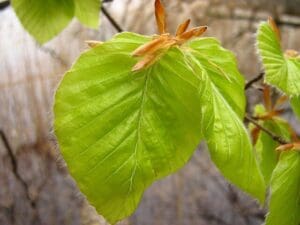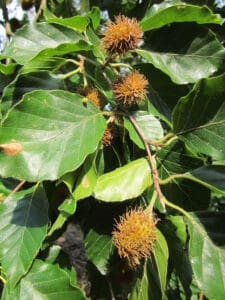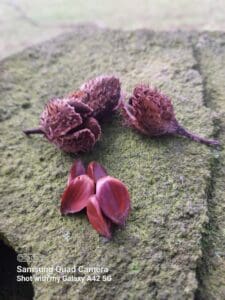Beech Tree / Spring / Summer / Autumn / Edible
Through this guide we’re going to take a look at how to Identify The Beech Tree.
As I walk through the dense woodland, my senses come alive with the earthy aroma of fallen leaves and the delicate rustling of branches above. Amongst the myriad of trees that surround me, one species stands out with its unique characteristics and unmistakable beauty: the Beech tree.
We might think that learning about trees and tree identification is a bit of a waste of time, but the Beech tree is definitely one to get the hang of as it has some exciting uses:
- Lots of wild Fungi like growing with Beech Trees
- You can make a delightful Beech Leaf Gin
- You can eat Beech Nuts
So let’s grab our baskets and head out looking for those Beech trees.
Common Names
Common Beech, European Beech
Botanical Name
Fagus sylvatica
Scientific Classification
Kingdom: Plantae
Order: Fagales
Family: Fagaceae
Physical Characteristics for Beech
The Beech Tree is a large tree, growing up to 40 metres tall.
Leaves
The leaves are lime green, with wavy edges and a border of tiny soft hairs. They are around 5-10 cm long, grow in alternate pairs and are simple. It is slow to lose its leaves, quite often holding them until the following spring.
Fruit and nuts
If you look around the base of the tree you may see many empty masts from previous years. The masts are egg shaped and bristly and open to reveal 1-3 triangular nuts.
The quantity of nuts varies massively from year to year. The nuts or masts appear in Autumn.
Bark
They have smooth silver/grey bark. as it is smooth and easy to carve into, it often attracts graffiti!
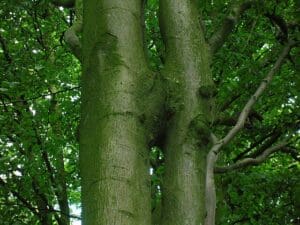
Habitat
They prefer well drained, slightly acidic soils. Very common throughout the UK. It is the dominant tree in the woodlands of Southern and Central England.
Known Hazards
There is some evidence to suggest that Beech shouldn’t be eaten in large quantities as they are toxic to some people.
Could be confused with
Large leaved lime (Tilia platyphyllos) perhaps, but the leaves of this tree are more heart-shaped and are also edible.
Edible Uses
The young, fresh leaves can be nibbled raw or added to salads.
The leaves are also used to make Noyau, a delicious alcoholic beverage.
The nuts or masts were commonly fed to livestock and when roasted make a good coffee substitute, they can also be eaten raw, simply peel off the outer shell.
They can also be pressed to make oil.
Notes on Herbal uses
The tree was thought to have medicinal properties and its leaves were boiled to make a poultice which was used to relieve swellings.
Extra notes from the Foragers
Beech is associated with femininity and is often considered the queen of British trees, where oak is the king. Forked beech twigs are also traditionally used for divining.



